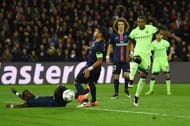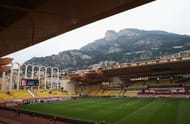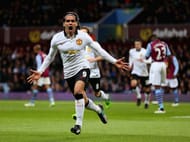One glance at the scoring charts in the top five European leagues is bound to surprise you. While the usual suspects such as Barcelona and Real Madrid are on the list, neither of them have scored as many goals as French side AS Monaco, who have scored a whopping 84 goals in 29 league games this season.
Moreover, they top the Ligue 1 table and hold a three-point lead over the big-spending Paris Saint-Germain. Also, they are the only French club in the quarterfinals of the UEFA Champions League after overturning a two-goal deficit against Manchester City in the first leg, with PSG falling to a history-making comeback by Barcelona.
One can easily think a team backed by a Russian billionaire can easily invest in top players and can reach this stature at some point as witnessed at Chelsea, Manchester City and PSG. However, the twist in the tale comes in the form of the players in the first team. Kylian Mbappe, tipped to be the next Thierry Henry, Bernardo Silva, Fabinho, Thomas Lemar, Benjamin Mendy and Tiemoue Bakayoko are all 23 years of age and below.
Several factors have resulted in a shift in the way AS Monaco are run at the moment and they are both natural as well as forced. To understand, we need to go back to 2011 where the first steps were taken.
After the highs under Arsene Wenger in and around 1990, Monaco added another feather to their cap a decade later when they made it to the Champions League final in 2004, only to lose to Jose Mourinho’s FC Porto. However, from then it went downhill for the Monaco club as they failed to compete at the top level and things went from bad to worse when the club was relegated to Ligue 2 after the 2010-11 season.
The Big Money Dream
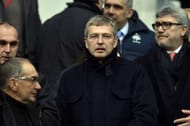
It was at this point that Russian billionaire Dmitry Rybolovlev bought a 66.67% stake in the club in December 2011 from Prince Albert, making it the first time that the royal family did not own a majority stake in the club since it was founded in 1924.
With AS Monaco failing to get promoted, Claudio Ranieri was brought in for the 2012-13 league season with Rybolovlev targeting a return to the top flight and Monaco were back to Ligue 1 as second-tier champions.
In order to not only sustain but also challenge for the Ligue 1 title as well as compete in European competitions, the Russian owner embarked on a spending spree, not unlike his billionaire counterparts at other European clubs.
His desire to win football’s Holy Grail was confirmed by the club’s sporting director then Tor-Kristian Karlsen who said, “Even then (while in Ligue 2), he told me quite a few times that his ambition was to win the Champions League”
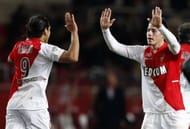
Another important step was for Rybolovlev to get into contact with football’s super-agent Jorge Mendes on Karlsen’s suggestion. As a result, the summer of 2013 saw a mega-splurge by the Monaco as Joao Moutinho and James Rodriguez from Porto, and Radamel Falcao from Atletico Madrid arrived to become the most expensive players in French history and unsurprisingly all of them were Mendes’ clients.
The injection of top players into the squad led to a second-place finish in the 2013/14 league season behind champions PSG and thereby qualification to the Champions League. However, the splurge of money caused a new problem for the Russian petrochemical magnate-owned club as UEFA’s Financial Fair Play (FFP) kicked in as a yardstick to ensure clubs spend within their means.
The FFP check
Along with fellow big spenders, Manchester City and PSG, sanctions were imposed on AS Monaco. Vadim Vasilyev, the club’s vice-president was quoted as saying,“When we started, the rules of financial fair play existed but had not been implemented. Nobody really knew how real it would be.”
Another problem faced by the club was the difficulty in convincing UEFA of the sustainability of Rybolovlev's investments. Manchester City benefits from the bigger reach of the Premier League compared to Ligue 1 and the incredible broadcast revenue while Paris Saint-Germain is situated in the French capital, has a stadium capacity of 48000 and therefore generates more revenue both from match days and commercial sources.
However, the entire population of the micro-state that is Monaco is around 38000 as per a 2014 estimate and several people reside here as it is a tax haven. Therefore, the interest and investment in football is not the same and also the Stade Louis II can accommodate only 18,523 viewers.
Hence, the Monaco club were hard-pressed to change their business model. In hindsight, that decision, although forced, has led to the rise of AS Monaco once again and this time in a sustainable manner.
Getting in line
In order to balance their books, AS Monaco started selling their big players. James Rodriguez, who became a superstar at the 2014 FIFA World Cup, joined Real Madrid for €80 million and Colombian striker Falcao was loaned to Manchester United.
Monaco sold 29 players in total in the summer of 2014 for €94 million, and bought 27 players for €40 million, thereby generating a profit of €54 million from transfers. Further, Leonardo Jardim took charge of the side as well.
This change in the football model led to a settlement agreement with UEFA whereby the club was forced to take the necessary steps to break-even the finances till the 2017/18 season. Supported by their owner, the club went about building an extensive scouting network and their training facilities received an upgrade due to the government providing a €25 million grant.
Efforts were made to bring in young players with immense potential who can use Monaco as a stepping stone while allowing the club to compete for top honours. It is here, once again, the super-agent Jorge Mendes played a key role.
Also Read: UEFA Champions League 2016/17: AS Monaco 3-1 Manchester City (6-6 agg.), Tactical Analysis
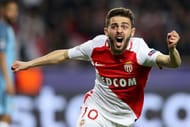
On one hand, Mendes helped Monaco acquire potential stars such as Bernardo Silva, who can grow along with the team and can be sold for a much higher valuation in a two-three year period.
On the other hand, he is supposedly helping in creating a loan network across Europe for players to receive playing time similar to Chelsea, so that the best players can play for Monaco while the remaining players can help balancing the books.
In the summer of 2015, €162 million was received from transfers. Anthony Martial moved to Manchester United for €50 million, Geoffrey Kondogbia sold to Inter Milan for €31 million, Layvin Kurzawa shifted to PSG for €25 million, Aymen Abdennour went to Valencia CF for €22 million and Yannick Carrasco joined Atlético Madrid for €17 million.
In turn, €96 million was mostly spent on buying players between the age of18 and 23, with a firm focus on developing elite youth players.
However, the transformation that the club was undergoing did not catch as much public attention and the sale of top players was seen as the crumbling of a dream and a fall back to mediocrity. But what happened next, particularly in this 2016/17 season, has surprised one and all in Europe.
The Dawn of AS Monaco
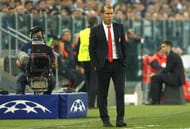
Les Monegasques now have one of the best academies in La Turbie, with players such as Kylian Mbappe and Valere Germain driving the first team. Given the low population of the principality, AS Monaco make use of their now extensive scouting system to assess and hand-pick the best youth players and the quick results vindicate the decision.
PSG’s youth coach Bertrand Reuzeau, one of the most respected youth coaches in France, left Paris to join the Monaco club last summer. This underlines the strong emphasis on building a rich talent pool that prevents breaking the bank often for a top player while ensuring the upcoming players can directly make a difference.
Although the club do know, they inevitably have to sell their star players, they are not worried anymore. In the words of club vice-president Vasilyev, “Eventually, we are a selling club. But we do not have to sell if we do not want to.”
This point was proven in January when a €60 million offer was turned down for the resurgent Falcao from China’s Tianjin Quanjian. AS Monaco’s rise as a platform for young talent was strengthened last summer when Djibril Sidibe chose the French team over Arsenal despite the latter having a reputation for developing youngsters.
A number of teams in Europe have scouted several Monaco players over the season and a few of them will move on. However, they are guaranteed to fetch huge prices for reinvestment and the club’s strategy of developing elite youth players will hold them well while replacing the departures.
Monaco are on course to win the Ligue 1 and are deservedly the only French representation in the final eight of the UEFA Champions League.

